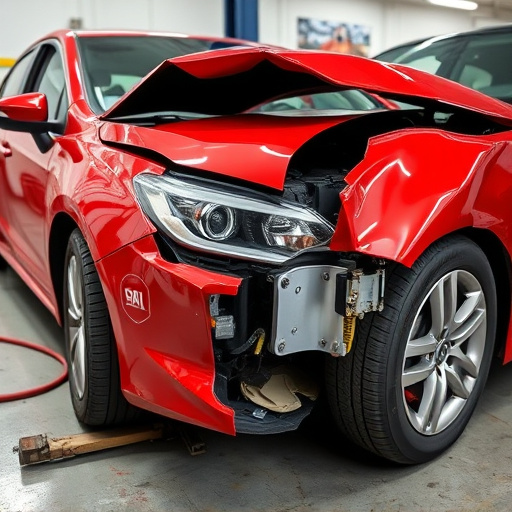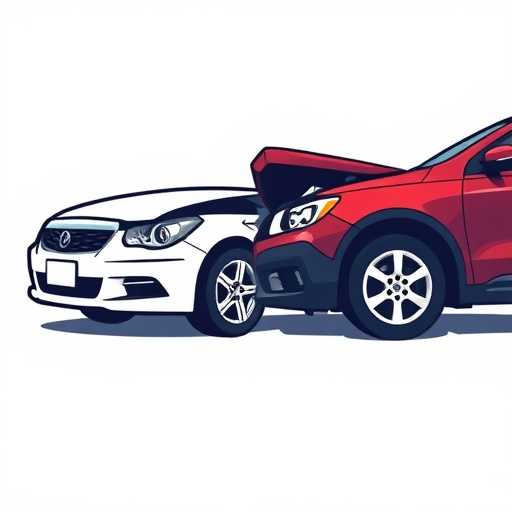Acting swiftly in filing collision insurance claims is crucial. Prompt reporting to insurers maintains claim freshness, preventing issues like forgotten details or lost evidence. Immediate steps include contacting the company, gathering driver information, and documenting vehicle damage through photos, streamlining repairs for both policyholders and auto body shops. Navigating claims can be intimidating but becomes manageable with a systematic approach: collecting relevant info, contacting insurers, assessing repair needs, and keeping detailed records. Avoiding common pitfalls like inadequate documentation or unqualified mechanics ensures a smooth process and fair compensation for vehicle repairs.
“Collision insurance claims are an essential aspect of protecting your financial well-being after a vehicular accident. Timely filing is crucial, as it ensures you receive prompt compensation and minimizes potential delays or denials. This article guides you through the process, from understanding the need for action within days to avoiding common mistakes. We’ll provide a step-by-step approach to filing claims, empowering you with the knowledge to navigate this critical period effectively.”
- Understanding Collision Insurance Claims: When to Act Promptly
- Filing Your Claim: A Step-by-Step Guide
- Common Mistakes to Avoid During the Claim Process
Understanding Collision Insurance Claims: When to Act Promptly

When it comes to collision insurance claims, acting promptly is crucial. The moment you’re involved in an accident, time becomes your ally—and your enemy. It’s essential to report the incident to your insurance provider as soon as possible. Delving into this process early ensures that your claim stays fresh in everyone’s minds, including the insurer’s. Prompt action can prevent any potential issues or delays that might arise from a forgotten detail or a lost piece of evidence.
Understanding when to file a collision insurance claim is key to navigating this aspect of auto ownership effectively. Remember, immediate action involves not only contacting your insurance company but also gathering essential details such as the other driver’s information and taking pictures of the damage to your vehicle. These steps facilitate a smoother process for both you and the chosen auto body shop or auto repair services, ensuring that your car receives the necessary auto painting or repairs in a timely manner.
Filing Your Claim: A Step-by-Step Guide

Filing a collision insurance claim can seem daunting, but with a structured approach, it becomes a straightforward process. Here’s a step-by-step guide to help you navigate this procedure efficiently. First, gather all necessary information and documentation related to the incident, including police reports, witness statements, and photos of the damage to both vehicles involved. Contact your insurance provider promptly to inform them about the collision, providing details like the date, time, and location. They will guide you through their specific claim filing process, which often involves filling out a formal claim form.
Next, assess whether your vehicle requires immediate or delayed repair. If there’s severe damage that needs urgent attention for safety reasons, choose a reputable car body shop recommended by your insurance company for repairs. Otherwise, you can opt for a specialized car bodywork service to fix minor dents and scratches later. Ensure all repairs are documented with receipts and estimates, as these will be crucial in supporting your claim and determining the reimbursement amount from your collision insurance coverage.
Common Mistakes to Avoid During the Claim Process

During the process of filing a collision insurance claim, it’s easy to make mistakes that can slow down or even jeopardize the outcome. Common blunders include failing to document damage thoroughly, not reporting all incidents and associated costs, and not keeping records of repair estimates from reliable car bodywork shops. Additionally, many policyholders underestimate the complexity of their claims, leading to unacceptable settlements.
Another frequent mistake is attempting DIY repairs or opting for unvetted mechanics, which can result in subpar dent removal or car paint services that don’t match your vehicle’s original finish. Always consult with your insurance provider about approved repair facilities and ensure all work is documented to avoid delays or disputes.
Knowing when and how to file your collision insurance claims is crucial for a smooth process. Act promptly after a crash to protect your rights and ensure fair compensation. By following a structured guide, avoiding common mistakes, and staying informed about collision insurance claims, you can navigate this critical period with confidence. Remember, understanding these steps can make all the difference in resolving your claim efficiently.













